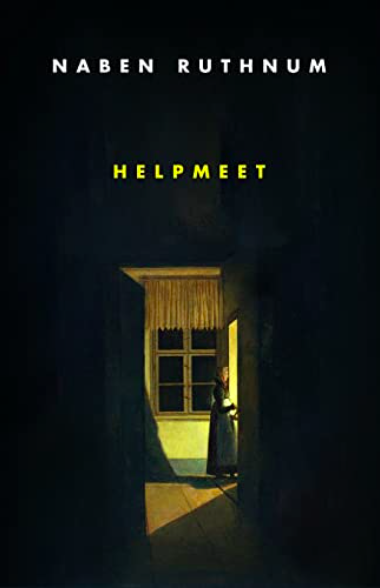
Helpmeet (2022) by Naben Ruthnum is a literary experiment that explores the relationship between language and pain. If you are interested in how writers negotiate the narrative problems posed by suffering characters, then I highly recommend this book. But I urge you to read it even if you have zero interest in the craft of writing because Helpmeet is also a compelling meditation on what it means to connect with another human being. At a mere 65 pages, this novella accomplishes more than many horror doorstops.
It’s November of 1900 in New York. Louise is relocating her husband, Dr. Edward Wilks, from their home in Manhattan to his family’s empty farmhouse just outside of Buffalo. In this isolated place, far from the prying eyes of old colleagues, Louise will care for her husband as he endures the final days of a mysterious and devastating disease. For the past year, she has watched the illness reshape his body, causing its various parts to weep, wither, peel away, or fall off. But as Edward lives well beyond the point that most of us would consider survivable, the question becomes: Is he dying or giving birth to something new?
Writers of body horror and medical studies have something in common: The challenge of describing physical pain. Pain resists linguistic representation because it often exceeds sufferers’ conceptual limits and vocabulary; it impairs their ability to speak and can even render them mute. This silencing poses a challenge to genre writers who, exploring states of physical extremity, want to communicate the uncomfortable sensations associated with their characters’ bodily injury or deterioration. Through Edward, Ruthnum experiments with ways around the problem of pain’s ineffability. As a doctor, Edward is determined to capture his experience in writing, and he takes notes until he can no longer hold a pen. Finding creative ways to convey how he feels, he personifies his disease, making it an active subject that sips, picks, pulls, and tugs. And when he can no longer effectively narrate his experience, we have Louise who provides a detailed external perspective.
Probing the boundary between language and pain, Helpmeet also investigates the limits of human relationships. For Louise to perform the disgusting acts necessary to maintain Edward’s body, she must really love him. The mystery of the novel for me isn’t so much Edward’s transformation as it is his wife’s unwavering loyalty. Why is she so strongly bound to her husband? Clearly, she didn’t marry him out of affection or desire: Their courtship lasted only a few weeks and she laughed off his first weak attempt at intimacy. So what is her motive? As a former nanny and hospital worker, she is far below Edward on the socio-economic scale. Yet, while she acknowledges the financial benefits of her marriage–lifting her from one class to another–she doesn’t seem driven by money. Is she emotionally close to Edward? Is there mutuality in their thoughts and reciprocity in their actions? Hardly. When she witnesses a physically impossible encounter between Edward and another woman, she doesn’t ask him what it feels like to defy the laws of physics. Privacy, Louise makes clear, is integral to their marriage, and she gives Edward so much of it that she may as well be alone. She redefines what it means to be physically and affectively adjacent to another human being.
Louise’s ideas about intimacy are far more compelling than what eventually happens to Edward. This book maintains a serious tone that is interrupted by the ridiculous culmination of his disease processes. Maybe less description would have been better. While body horror often intersects with comedy, I was immersed in the general solemnity of Louise’s meditations and hoped that the book wouldn’t go there. But it did. Despite my disappointment with the etiology and outcome of Edward’s disease, I loved the story’s style and ambiguity. Don’t miss this strange little book.
Leave a Reply